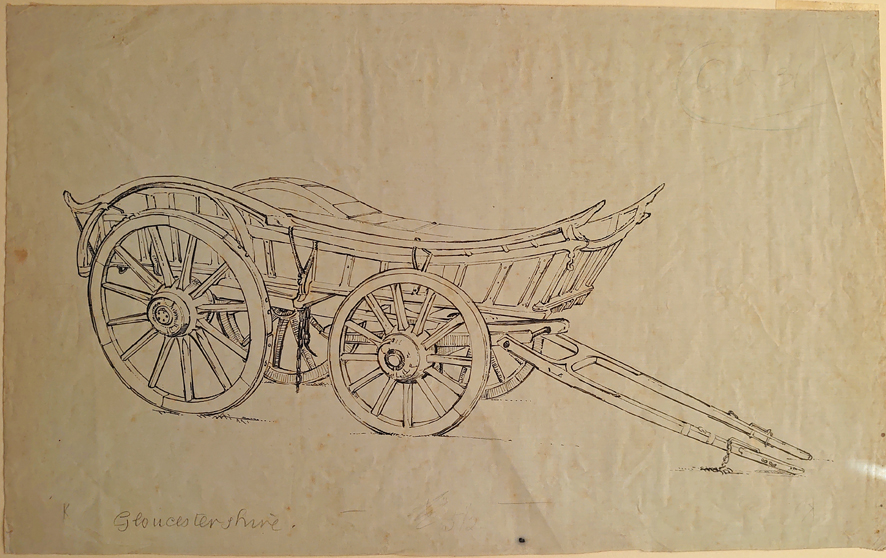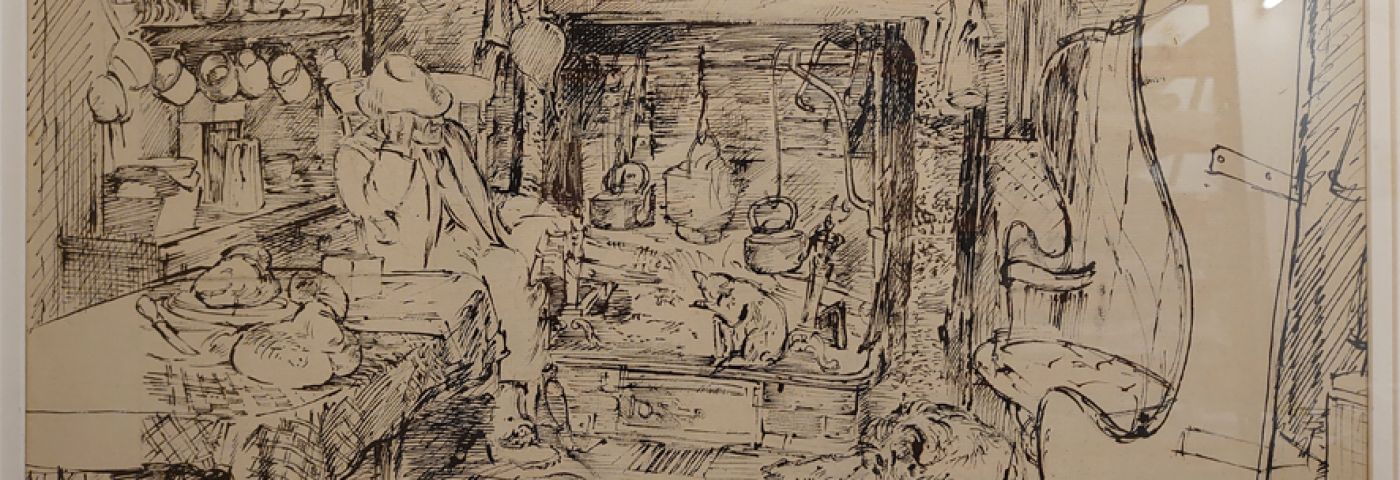Blog by Dr Caroline Morris
If you were to wonder about what skills a collections assistant might need to work in a museum, I suspect Sherlockian detective abilities may not be your first thought. I may exaggerate slightly but there is a certain detective skill needed in my job. When the museum has so many objects both in store and on display, keeping a close reign on inventory and cataloguing is key. At any time, a member of the public or researcher could ask a question about an object which might mean finding the object and discovering information about its history. Nine times out of ten this is a very simple matter thanks to the catalogue or inventory, however other times there are gaps in the paper trail, and you have to trace that object through the archives of the museum like Theseus trying to find his way out of the labyrinth. Each object brought into the museum is given a number which means that various references to the object across the museum archive can be linked together – a key thread through the labyrinth. Hopefully you have this thread to follow, or clues that lead you to the answer. However sometimes the mystery lurks in the store for a while until you find the trail again.
Such was the case with two framed ink drawings that I found in the store early in Autumn 2021. I had to re-inventory a bay of objects which had at some stage become muddled and these unrelated objects were amongst them. They had no labels or numbers pencilled on them which was perplexing, however there was a helpful written clue on the back of one of them which told me what it might be. This said that this ink drawing was an illustration by Thomas Hennell for a book by H.J.Massingham called ‘Country Relics’. It depicted the kitchen at Bangrove Farm, near Tewkesbury. I knew from some basic internet research that Thomas Hennell was a British artist and writer who specialised in the British countryside and that he was a noted war artist in the Second World War: he was killed in Indonesia in 1945 whilst serving. I returned to the digital database but the picture title, the artist and the farm name yielded nothing. However, it did lead me to two other Hennell prints in the paper archive. The catalogue giveth but it can also take away.
A few weeks later serendipity came to my aid. I was looking through a filing cabinet for information on a particular costume collection but instead came across the ‘object file’ for the Hennell pictures right at the back of the drawer. The four Drawings by Thomas Hennell were bought directly from a private seller in Cheshire for a four-figure sum in January 1992. This was achieved with the help of a grant from the Museums & Galleries Commission. The file contained letters to and from the seller, the grant providers, and the Corinium Museum & Countryside Collection curator at the time, David Viner. There was also a document that described where each of the pictures’ subjects had been drawn and the publications in which they appeared. Having found my way out of this particular labyrinth I could update our digital catalogue with much more detail, correctly label the pictures with their attributed titles and bring them to the attention of my colleagues.

Framed Drawing in ink by Thomas Hennell of Bangrove Farm near Winchcombe now called Bengrove Farm. The subject was described in H.J.Massingham’s ‘Country Relics’ published by Cambridge University Press 1939. The illustrations for this volume were provided by Hennell as one of four Massingham books published between 1939-1945. From the text it is clear that Massingham particularly wanted an illustration of the farmhouse domesticity of the Sexty family (a sister and three bachelors) and the kitchen scene was chosen to provide it. The drawing is signed and dated “T.Hennell 1938”.

Framed Drawing in ink by Thomas Hennell. Sawpit was illustrated in H.J.Massingham Country Relics on page 61 with a description on the tradition of pit sawing in general and of this pit in particular. A detailed provenance is not given except that the pit “stood in a bay of steeply rising ground above a ford of the Isbourne River” which a footnote describes as in the Northwest of Gloucestershire. This river flows in a northerly direction from Winchcombe and crosses the Worcestershire boundary to join the river Avon at Evesham. It seems very likely that the saw pit was only a few miles from Bengrove Farm. It is described in detail in the text. The drawing is not signed or dated but presumably also belongs to the c.1938 period.

Unframed ink drawing by Thomas Hennell. This drawing is labelled “Gloucestershire” and is published in Thomas Hennell’s “The Old Farm” (1984). The waggon is provenanced to West Littleton, which is old Gloucestershire; it is described as being over a century old and remaining in use until 1929. Hennell very correctly selected this waggon as an excellent example of regional variation, in this case the south Gloucestershire type, which with a number of variations in detail serves also to represent the Cotswold waggon types.

Unframed ink drawing by Thomas Hennell. The drawing is labelled “Ox Team Cirencester 1930”. Although not illustrated in H.J. Massingham’s Country Relics, this drawing relates to the text in the section on ploughing with reference to the use of oxen. The drawing is labelled “Ox Team Cirencester 1930”. The text refers to the then last surviving working ox-team in England, belonging to Lord Bathurst at Cirencester Park. There is little doubt that this drawing was reference for (even if not reproduced in) Massingham’s studies.










